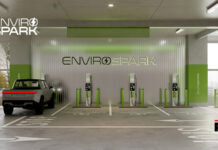In recent years, electric vehicles (EVs) have emerged as the driving force behind a sustainable and eco-friendly automotive future. With advancements in technology and a global shift towards greener alternatives, EVs have become a symbol of innovation and environmental responsibility. This blog aims to provide a comprehensive guide to electric vehicle. According to Extrapolate, the Global Electric Vehicles Market is anticipated to reach $974.15 billion by 2030. Without further ado, let’s learn more about the billion-dollar industry.
Introduction to Electric Vehicle
The automotive industry has witnessed a significant paradigm shift with the rise of electric vehicles. As concerns about climate change and environmental sustainability grow, more consumers are opting for electric cars as a cleaner and more energy-efficient alternative to traditional internal combustion engine vehicles. The push toward electric mobility is driven by the need to reduce greenhouse gas emissions, and dependency on fossil fuels, and mitigate the environmental impact of transportation.
EVs are vehicles that are powered by electric motors and use electricity stored in batteries as their primary source of energy. Unlike traditional gasoline-powered cars, EVs do not have an internal combustion engine and do not require gasoline or diesel fuel to operate. Instead, they rely on rechargeable batteries to store and provide electricity to power the vehicle’s electric motor.
EVs come in various forms, including battery electric vehicles (BEVs), plug-in hybrid electric vehicles (PHEVs), and range-extended electric vehicles (REEVs).
What are the Basic Components of Electric Vehicle?
An all-electric car consists of several key components that work together to enable its electric drive system:
- Battery (all-electric auxiliary): Provides electricity to power vehicle accessories.
- Charge port: Establishes a link between the vehicle and an external power source for powering the traction battery pack.
- Electric traction motor: The car uses power from the traction battery pack, with some vehicles using motor generators for both drive and regeneration functions.
- DC/DC converter: It transforms lower-voltage DC power by converting higher-voltage DC power sourced from the traction battery pack.
- Onboard charger: Converts incoming AC electricity from the charge port to DC power for charging the traction battery, monitoring battery characteristics during charging.
- Power electronics controller: Manages the flow of electrical energy from the traction battery, controlling the speed and torque of the electric traction motor.
- Thermal system (cooling): Maintains the proper operating temperature of the engine, electric motor, power electronics, and other components.
- Traction battery pack: Stores power that is used by the electric traction motor.
- Transmission (electric): Drives the wheels using mechanical power from the electric traction motor.
Benefits of Electric Vehicles
Now that we have a fair idea about EVs, let’s look at their benefits.
- Environmental Impact: One of the primary advantages of EVs is their significantly lower environmental impact compared to traditional vehicles. EVs produce zero tailpipe emissions, reducing air pollution and mitigating the effects of climate change.
- Cost Savings: While the initial cost of purchasing an EV may be higher, owners benefit from lower operating costs. EVs have fewer moving parts, resulting in reduced maintenance and repair expenses. Additionally, electricity is generally cheaper than gasoline, which contributes to long-term cost savings.
- Incentives: Many governments worldwide offer incentives and rebates to encourage the adoption of EVs. These incentives may include tax credits, subsidies, and exemptions, making EVs more financially attractive for consumers.
- Energy Efficiency: Electric vehicles are inherently more energy-efficient than their traditional counterparts. The conversion of electrical energy to mechanical energy in an electric motor is more efficient than the combustion process in internal combustion engines, resulting in better energy utilization.
How Much Do Public EV Charging Stations Charge?
Public EV charging stations determine the cost of charging based on state regulations, and the billing methods generally fall into two categories.
- Kilowatts per Hour (kWh): Similar to home electricity billing, charging costs are based on kilowatts per hour (kWh). Utility companies measure electricity consumption in kWh and bill users in cents per kWh. For example, a Level 2 charger at home operates at around 32 amps, delivering 7 to 19 kW of power. Level 3 public stations provide even more power. The charging cost is calculated using the formula: Charging Cost = (VR/RPK) x CPK, where VR is the vehicle’s range, RPK is the range per kilowatt-hour, and CPK is the cost per kilowatt-hour.
- Charging by the Minute: Some public charging stations charge users based on the time spent charging. There’s a fixed amount of electricity delivered to the car every minute, determined by state laws, and electricity providers set their pricing accordingly. These stations typically round up the charging time to the nearest 30 seconds.
Are There Any Free Public Charging Stations?
Currently, the majority of public charging stations require payment, often through network memberships or direct payment at the station. Some establishments, such as shopping malls, supermarkets, restaurants, hotels, and universities, may offer a limited number of free chargers as an incentive for customer attraction. It’s worth noting that these free stations represent a small portion of the overall public charging options. If you’re fortunate enough to access free charging, it provides a great opportunity to reduce charging expenses.
When it comes to home charging, it remains the most cost-effective choice for EV owners. Home charging costs depend on equipment, installation, and your home electricity rate. Investing in a high-quality home charging system is comparable to the cost of a year’s regular maintenance for a gas-powered vehicle. Additionally, the IRS provides a tax credit for purchasing a new electric car, nearly double the credit offered for buying and installing a new home charging system.
Winding Up
Electric vehicles present a cleaner and more sustainable mode of transportation, playing a pivotal role in diminishing air pollution, minimizing dependence on fossil fuels, and addressing the challenges of climate change. With ongoing technological advancements and improvements in infrastructure, the embrace of EVs is anticipated to grow, paving the way for a future characterized by environmental friendliness and sustainability.
Browse More Posts:-
Home Textile Products Market
Household Blender Market
Household Cleaning Products Market
Household Cleaning Tools Market




